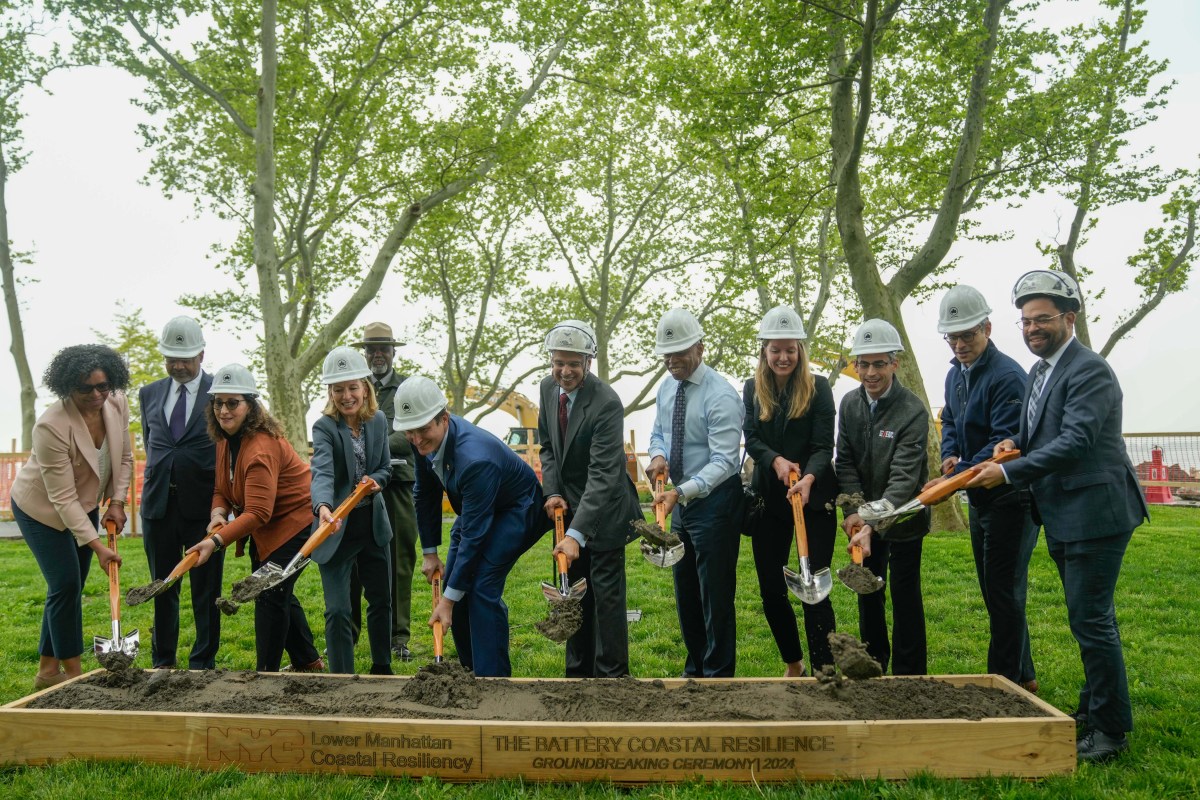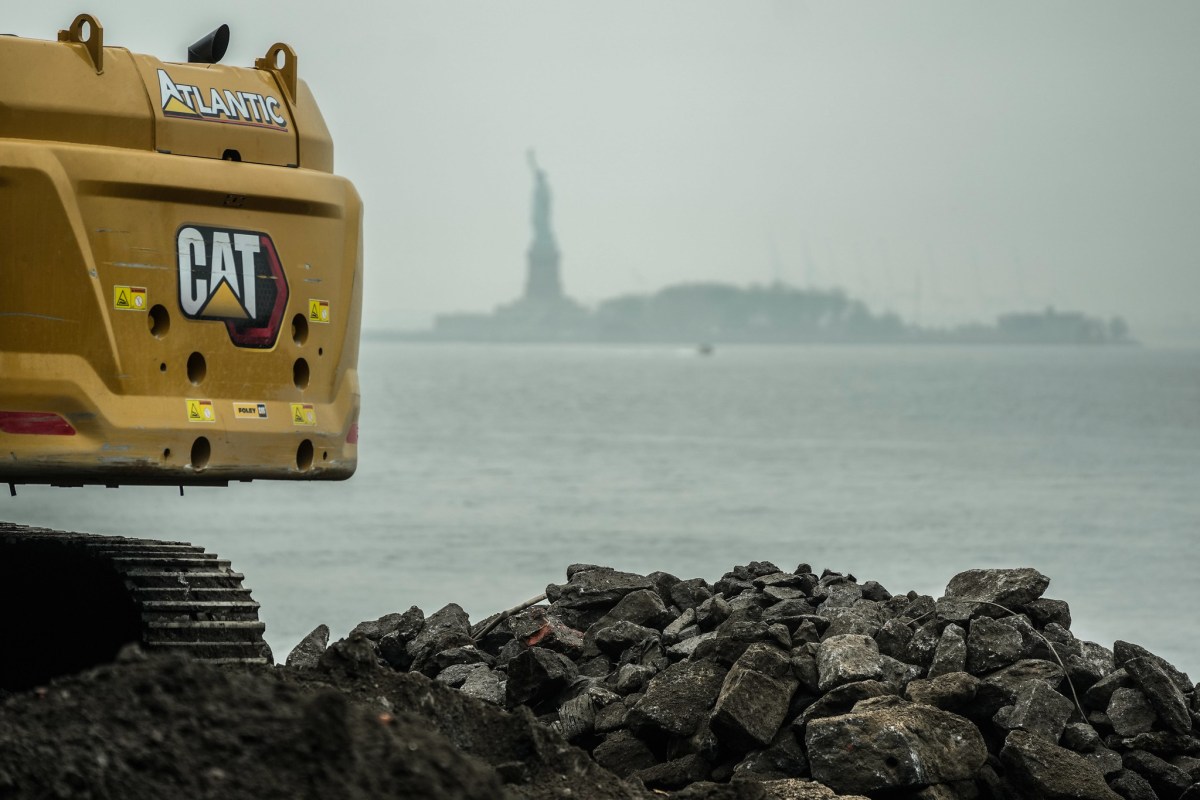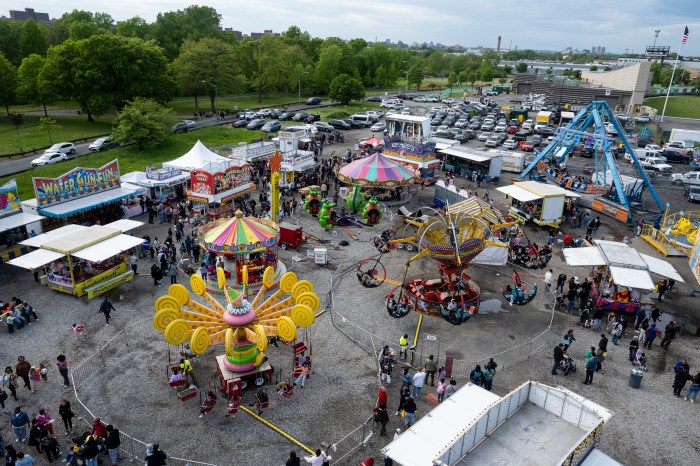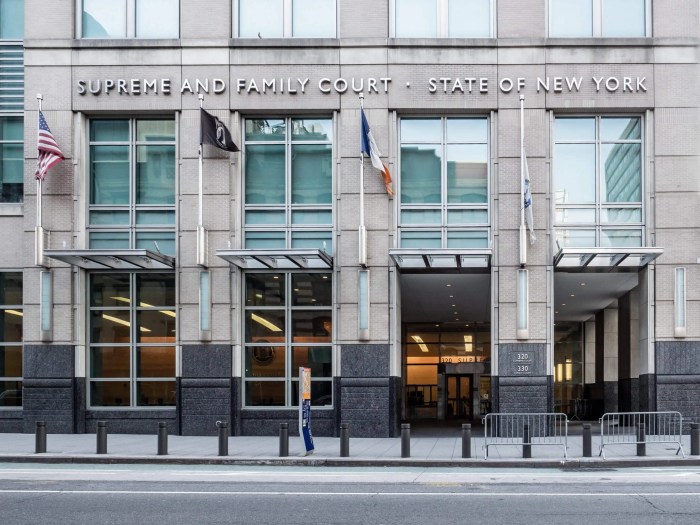The city broke ground in Battery Park Monday on a $200 million project to raise the waterfront and protect it from sea level rise — part of an investment worth billions of dollars in shielding Lower Manhattan from the effects of climate change in the coming decades.
The Battery Coastal Resilience project will see the waterfront wharf at Battery Park, the historic greenspace at the lower tip of Manhattan, raised about 5 feet to protect against sea levels expected to rise two feet by the 2050s, as well as more frequent storm surges like that which crippled Lower Manhattan after Hurricane Sandy in 2012.
“We have been so abusive to Mother Earth, we now must take corrective action,” Mayor Eric Adams said at the groundbreaking on Monday. “We have to build a safer, stronger, and more sustainable city.”
Construction is set to be completed by the middle of 2026, around the same time other major resiliency projects near the Brooklyn Bridge and along the waterfront East River Park are expected to reach the finish line. They are all part of the overarching Lower Manhattan Coastal Resiliency project, which is expected to cost up to $7 billion when completed but would ostensibly save the city billions more by protecting people and infrastructure from storm surge.

“This is the single largest urban climate adaptation project in the nation,” said Hizzoner. “And it will lay groundwork to protect our city’s future.”
Meanwhile, the state-run Battery Park City Authority is working on its own resiliency project to protect the neighborhood perched on landfill in the Hudson River.
The city says that the “upland” sections of Battery Park will remain open during construction. That differentiates this project from the one at East River Park, which required closing the entire greenspace and enraged some local residents enough that they opted to sue. Their lawsuit was ultimately tossed and work began as planned.


















